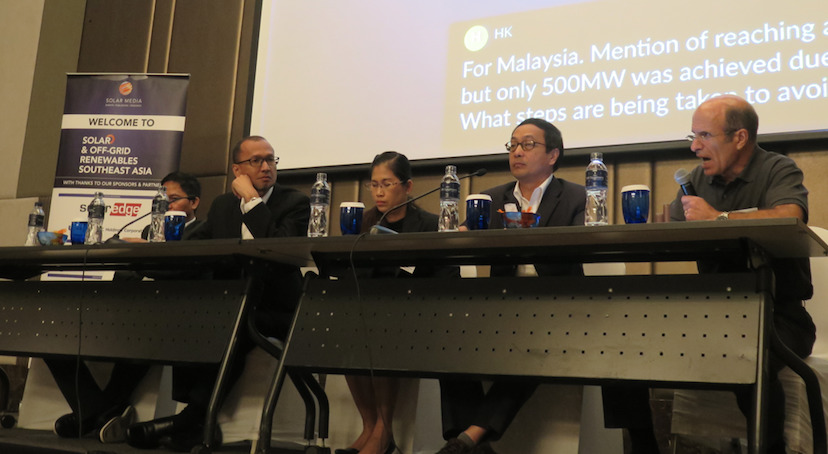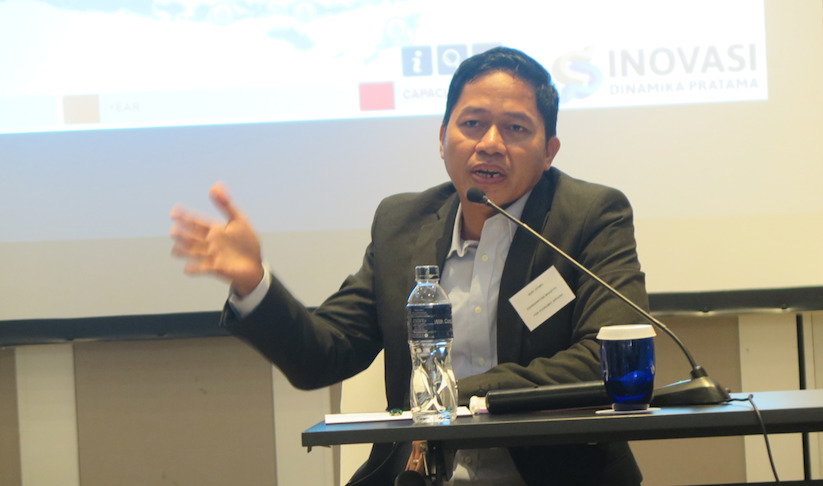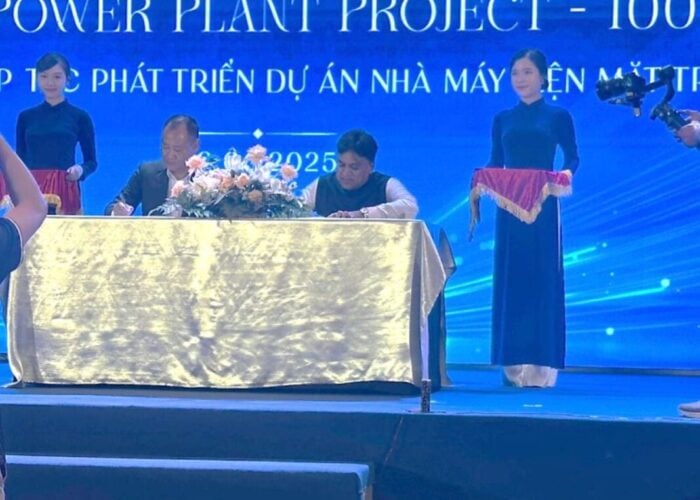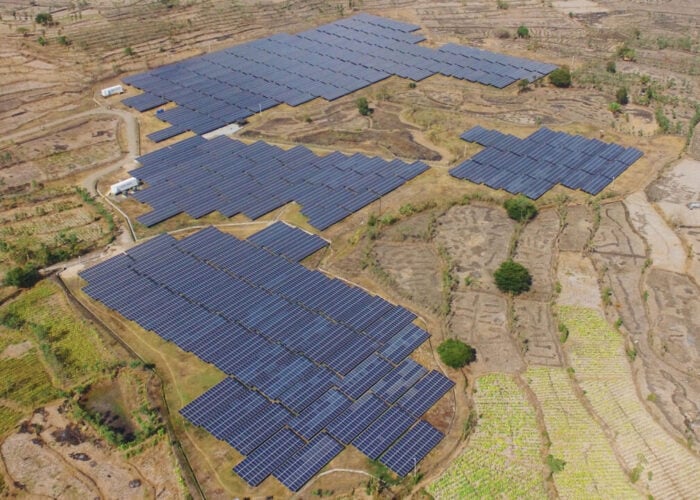
The case for solar remains strong in Southeast Asia since power demand is still growing rapidly in many of its markets, but traversing the unique regulations and policies of each country and knowing which PV segment is most suitable remains challenging. What follows are some of PV Tech’s key takeaways from last week’s Solar and Off-Grid Renewables Southeast Asia (SORSEA) 2017 conference in Bangkok, Thailand.
In some countries, regulatory barriers on the utility-scale side are pushing the short-term opportunities into C&I rooftop solar, but there are hopes for Malaysia where the market is maturing with its Large-Scale Solar (LSS) auction programme, and Vietnam with its new feed-in tariff (FiT) for solar and wind. Indonesia is beginning to make inroads in terms of electrifying its thousands of islands and we heard the government has recently installed hundreds of micro-grids, albeit of varying quality.
Unlock unlimited access for 12 whole months of distinctive global analysis
Photovoltaics International is now included.
- Regular insight and analysis of the industry’s biggest developments
- In-depth interviews with the industry’s leading figures
- Unlimited digital access to the PV Tech Power journal catalogue
- Unlimited digital access to the Photovoltaics International journal catalogue
- Access to more than 1,000 technical papers
- Discounts on Solar Media’s portfolio of events, in-person and virtual
Land remains a major issue with one analyst noting that getting 500+ hectares of contiguous plots of land is nigh on impossible in the ASEAN region. As reported last week, the corporate PPA market looks set to fly in the face of any large-scale slowdowns, again excepting some regulatory challenges. Meanwhile, the phrase ‘floating solar’ popped up frequently at the conference, with its much-hyped ability to remove the land constraint issue. The region is of course, awash with water bodies from hydro dams and thermal power ponds to man-made reservoirs.
Once seen as a region where returns for solar should be higher than other markets, we’ve seen these returns start to get squeezed by the steady rise of competitive auctions and the large number of international developers in the conference room were testament to that competition, which also drives down prices and impacts returns. Ultimately, large-scale PV progress is still limited and it will be very interesting to see in 12 months’ time at the next SORSEA conference, whether this stagnation will change. Delegates said the capacities tendered so far have been tiny in comparison to the size and population of the countries involved.
A Bloomberg New Energy Finance (BNEF) presentation also noted that Southeast Asia is “far behind” other regions in auctioned capacity, while also having “comparatively higher” risks.
Many criticisms of utilities being reluctant to open up to renewables were aired, although some including Meralco of the Philippines and TNB of Malaysia detailed their own renewables projects at the event, which was seen as positive sign. Others such as PLN of Indonesia, were described as ‘not having any money’, which was a major drawback for budding solar developers.
Thailand’s latest co-operative utility-scale programme is winding down and the Philippines has PPAs of all forms stuck at the regulator’s office. But perhaps Malaysia will push on with a third round of its LSS auctions and the big question marks around the highly promising Vietnamese market could start to get answered. If Vietnam’s much touted multi-Gigawatt pipeline – one government official put the figure at 17GW – actually goes from development into construction, then the industry might start to change its attitude towards the solar PPA, whose parameters have taken a battering in the media – not least on PV Tech – due to its infamous off-taker and curtailment risks.
There were also differing views on whether solar-plus-storage has already become economically viable in Southeast Asia, or still requires a few years to start seeing widespread adoption.
Clearly, there was plenty to get one’s head around at SORSEA, and the slightly deeper dive into the more prominent markets below offers a mere taster of the vast array of issues debated:
If you missed Solar & Off-Grid Renewalbes Southeast Asia 2017 in November, the speaker presentation slides are available to purchase as PDFs for only $299.
|
Thailand

With its large-scale ambitions constricted to a complex co-operative scheme, the other major hope for developers in Thailand is its recently announced hybrid ‘firm’ PPA scheme, which seeks to encourage energy storage being coupled with large-scale renewable energy projects to generate a fixed output from each system.
Dave Edmonds, vice president, business, IMI Group, said this tender had been 4-5 times oversubscribed, showing a high level of interest.
Meanwhile, Franck Constant, founder and CEO of Constant Energy, explained how corporate PPAs, particularly in solar rooftops, were set to boom over the next 3-5 years in Thailand, as well as much of the rest of the region.
Philippines

The Philippines has gone from a FiT at US$0.17/kWh in early 2016 to a Competitive Selection Process (CSP) resulting in $0.058/kWh as the lowest price this year. It is one of the first countries of the region to grapple with the post-subsidy era.
Leandro Leviste, CEO, Solar Philippines, said the CSP wining price had dashed claims of developers that the country needs regulation and policy support to grow the PV industry, but not all developers can take this merchant risk and Leviste admitted that many developers had either stopped or left the Philippines due to regulatory barriers, such as the backlog of permit approvals at the ERC.
However, he also said: “This price should set a benchmark for the region, where high land costs, moderate irradiance, and relatively high interest rates had previously led others to believe that Southeast Asia prices would remain higher than other regions.”
Carlos Gatmaitan, chairman of MRC Allied, agreed that the Wholesale Electricity Spot Market (WESM) was a welcome backup option, and he noted that the demand for electricity per capita in the Philippines was rising around 7% each year, which means solar should have a role to play to fill the gap between supply and demand.
Referring to the restriction of 40% foreign ownership on Filipino projects, Allard Nooy, CEO of InfraCo Asia Development, said that the Philippines has a number of credible partners available to alleviate the issue.
He added: “The liquidity in the market is very high. It's got a pretty deep debt market at the moment, therefore usually international financing is not required, which helps, but in terms of being restricted to 40% you are able to get around that on a number of different arrangements.”
If you missed Solar & Off-Grid Renewalbes Southeast Asia 2017 in November, the speaker presentation slides are available to purchase as PDFs for only $299.
|
Malaysia
Malaysia's second round LSS auction results are due to be released soon, and the results are widely expected to hit new lows for the country, having been heavily oversubscribed.
Dr Azhar Abd Rahman, project director, renewables division at major utility TNB, said the auctions are due to procure up to 250MW each year to reach 1GW by 2020. This makes it one of the only ASEAN markets with active large-scale tendering activity at present. Rahman said securing a partnership is a difficult task and it is important to build up a presence in the market to succeed. He also hinted that prices are continuing to go down.
However, Akmal Samah, COO of Malaysia’a Sustainable Energy Development Authority (SEDA), the body which conducts the auctions, said that many of the incumbent energy firms and utilities had been reluctant to accept renewable energy. There have been no serious technical issues so far, but he warned that as capacity closes in on 1GW that could create “some resistance” from the utilities.
The nation will also be hoping that the second auction does not see a repeat of the first, where several projects have not gone ahead. The most high profile of these was a 50MW(AC) project by Malakoff, whose approval was withdrawn after a change in location.

Auctions were a hot topic at the conference and there was much talk of the need for the auction process to pick out reputable bidders via a robust prequalification process to prevent second round selling of the PPA rights to other developers.
The SEDA representative admitted the authority could have tightened its selection process in the early stages of its original FiT programme. He noted that just 520MW of renewable energy capacity had been built so far out of 1.4GW that had been approved. SEDA has in fact been under pressure to cancel some of these approvals for delayed projects and to give the quota to other developers who are more ready and experienced to conduct these projects.
Vietnam
Vietnam is now set to offer some of the best returns in the region with the introduction of a generous US$0.0935/kWh FiT for projects completed by June 2019, which has drawn many developers to the market.
Dr Tuan Nguyen Anh, Renewable Energy Centre, Institute of Energy, at the Ministry of Industry and Trade (MOIT), said that Vietnam is also considering auctions beginning in 2020, once the FiT comes to an end.
Nguyen gave the usual Vietnam government line announcing bombastic pipeline figures, despite negligible reported action on the ground, and claiming “huge” levels of interest from international developers.
He said MOIT will also have completed a solar PV assessment study by January 2018. He did note that land is already seen as a major constriction with conflicts looming in the agricultural and forestry sectors.
The PPA parameters are still a major concern, although Nguyen noted that a kind of 'Take-or-Pay' PPA was being discussed, which could comfort some developers.
Allard Nooy said that dispute resolution and curtailments are inadequately addressed in the PPA, however in terms of the off-taker risk with the monopoly utility EVN, he offered a refreshing alternative to the huge negativity around the issue to date, using his previous experience with EVN on other power projects.
He said: “EVN is not a very creditworthy organisation – that’s absolutely true, but the fact of the matter is that on foreign invested IPPs they have never ever defaulted on a PPA. And given our most recent experience with a hydro project, they have paid us in the last 18 months every month on the dot. So our experience has been actually quite good for EVN.”
If you missed Solar & Off-Grid Renewalbes Southeast Asia 2017 in November, the speaker presentation slides are available to purchase as PDFs for only $299.
|
Indonesia

Indonesia targets 5GW of solar by 2020 in its National Development Plan, but the utility PLN has come up with a 10-year plan, which more or less disregards solar. However, it does have an on-going tender out, with a ceiling price of US$0.07/kWh. This has been criticised for being unreasonably low by some developers, said Leandro Leviste, but despite this, at least 120 developers still applied to the tender.
Stefan Robertsson, senior advisor, Lantau Group, said that there is “no doubt” the country will have plenty of solar deployment in the long-term, but in the short-term it is easy to be “cautiously pessimistic”. The financial difficulties of PLN remain the main barrier, and Robertsson said the current minister appears very focused on keeping costs down for PLN, rather than raising electricity prices and making solar more viable.
“You have basically very poor regulation that goes back to the tariff setting in Indonesia,” he added.
He said the upcoming bid for 160MW in Sumatra could add some momentum, but this will depend on what tariffs come out of it and whether the awards get dragged out over a period of time. There are plans for a second tender for around 80MW in Kalimantan, but Robertsson said these capacities are very small in comparison to the size of Indonesia.
He added: “For the next 1-3 years there will be progress, but it will be limited progress. In the end it’s very much tied to the economics. There’s very little financial support or financial incentives above tax credits from the government.”
Andre Susanto of Bluejay Energy offered a similar perspective: “The biggest issue is PLN doesn’t have any money. They only have two income streams which is revenue from households and C&I clients and government subsidy, which is given directly to PLN.”
He said that unless the consumer tariff is raised to provide PLN with more money, then the larger scale PV progress will remain stuck, but he did praise the country's progress in micro-grid deployment over the last 12 months.
Emerging markets

Cambodia, Laos and Myanmar have tended to trudge behind other ASEAN markets in solar progress, but we saw major utility-scale solar park plans for Cambodia in partnership with the Asian Development Band (ADB) start to take shape, work starting on a 220MW solar plant in Myanmar and talk of huge floating solar potential in Laos.
Cambodia was praised for its openness to foreign investment, but is still seen as risky. Kenneth Stevens, managing director of Leopard Capital, said: “A country like Cambodia, which is still a cowboy kind of place – Wild West – is open to foreigners coming in and open to foreigners doing it, sometimes too much. They expect the ADBs to pay for the roads, to pay for the power, the IFCs to come in and do their thing.”
Nevertheless, as a AAA rated agency, ADB has the power to capitalise on first-of-kind projects across the region, such as the 10MW PV plant with Sunseap in Cambodia. The bank also worked on rooftop investments in Thailand, is pursuing large-scale projects in Myanmar and is in discussions over floating solar in Laos, said Pradeep Tharakan, senior energy specialist, ADB.
Rooftop solar in Cambodia is currently under threat, however, as a draft regulation has been issued that has brought uncertainty over the legality of both completed and new PV projects, without a newly-introduced permit.
Floating
Floating solar is making its mark across the globe, and as reported by PV Tech, Southeast Asia looks set to become a major market, after pioneer Ciel & Terre announced manufacturing plans in Thailand and Vietnam as well as more progress in Malaysia.
ADB’s Tharakan said: “There's always a downside that comes along with [new power sources] and in solar its land. Arable land is in short supply in Southeast Asia and so it’s going to be hard to find hundreds and hundreds of acres each time to build these plants.”
Due to these constraints, floating PV opportunities were cited for almost every Southeast Asian market during the conference, particularly on hydro dams.
The Solar Energy Research Institute of Singapore (SERIS) is also pioneering with the world’s largest test centre for floating solar.
Singapore continues to have a burgeoning rooftop solar industry, but as a market remains restricted by land.

In the long-term, Southeast still shines as a major opportunity for solar PV and in the meantime, the off-grid sector can capitalise on the huge number of islands and unelectrified populations, where major grids make less sense. Overall progress over the next 12 months could largely come down to regulators. Perhaps a good summary of the current predicament of the industry came from one delegate discussing the Philippines, who said: “The GDP is growing and power demand is growing, which is perfect for solar, but there’s nothing we can do about the regulations.”
If you missed Solar & Off-Grid Renewalbes Southeast Asia 2017 in November, the speaker presentation slides are available to purchase as PDFs for only $299.
|






